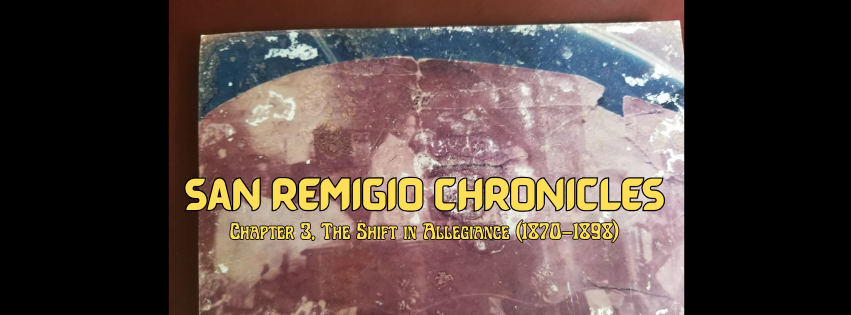San Remigio Chronicles: Chapter 3, The Shift in Allegiance (1870–1898)
(Rewritten from the account of Deogracias M. Petinglay)
SAN REMIGIO
Rosalinda Velasco Petinglay
10/29/20252 min read


Following the chaotic suppression of the Palmero uprising, the Spanish government decided that a permanent military presence was required to subdue the volatile spirit of the region.
In 1870, a detachment of the Guardia Civil was assigned to San Remegio (which was still under the jurisdiction of Sibalom). Their presence was intended to be a heavy hand of order, but it was also a visible symbol of colonial oppression. They remained a constant, unwelcome fixture in the town until 1898, when the rising tide of the Filipino-Spanish Revolution forced them to abandon their posts and return to Sibalom to consolidate their forces.
But the seeds of local resistance, sown by Don Rafael Agustin Baladjay fifty years prior, had not died. They had matured into a new generation of leaders who were prepared to seize the moment.
In August 1897, as the general Philippine Revolution began to take hold, a local force called the Voluntarios was formed. Ostensibly, their purpose was the defense of the region against the burgeoning revolutionists. These local volunteer forces were placed under the command of Lieutenants Felix Velasco and Martin Maza.
Martin Maza was a man of destiny, one of the two sons of Teodora Baladjay Masa—a direct descendant of the exiled rebel of Tigbagacay. The defiant blood of his grandfather ran in his veins, even as the family name itself had been changed from Masa to Maza to comply with Governor-General Claveria's order for Filipinos to adopt Spanish surnames. He was now an officer in a Spanish-controlled militia, but his true allegiance would soon become apparent.
The loyalty of the Voluntarios was fragile, resting on a tension that snapped in December 1898. By this time, the Filipino Revolutionary troops under General Leandro Fullon were making significant headway in Antique. Faced with a crumbling colonial structure and the promise of a sovereign future, Martin Maza and the Voluntarios made a pivotal choice.
Instead of fighting the revolutionaries, Maza led his forces directly to San Jose to join them. They became an instrumental part of General Fullon's troops, aiding in the capture of the Spanish garrison there. Simultaneously, the Spanish Lieutenant commanding the local volunteers in Sibalom also defected, offering his services to the Revolutionary authorities.
The colonial era had effectively ended in Antique.
The establishment of the Filipino Municipal Government quickly followed in January 1899, operating under the auspices of General Fullon. The men who had fought—and whose families had fought—to free the area were immediately installed in positions of power. Among them:
Martin Maza: Municipal President
Luis Occena: Vice-President
Evaristo Villar: Justice of the Peace
Florentino Marfil: Chief of Police
Eugenio Sancha: Revenue Commissioner
However, Martin Maza was a soldier first, a revolutionary second, and an administrator last. By the middle of the same year, he stepped down from the Municipal Presidency, delegating his duties to Luis Occena. The Lieutenant, the grandson of a freedom fighter, had a higher calling: he assumed the critical position of Lieutenant Colonel of the Militia, preparing to face a new and far more powerful foreign threat that was already looming on the horizon.
